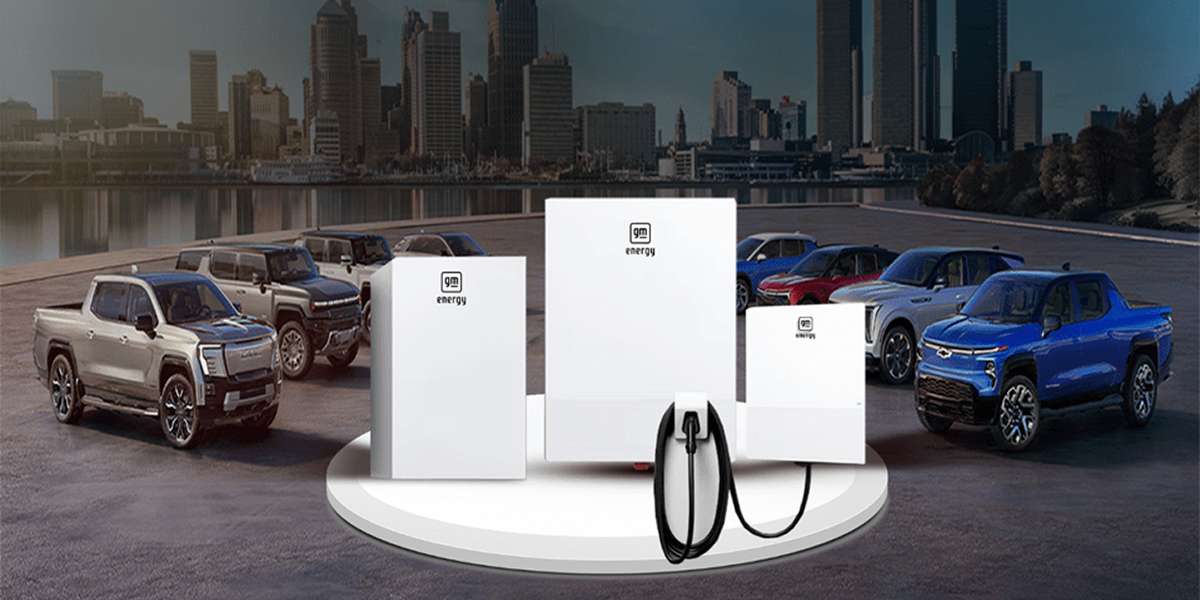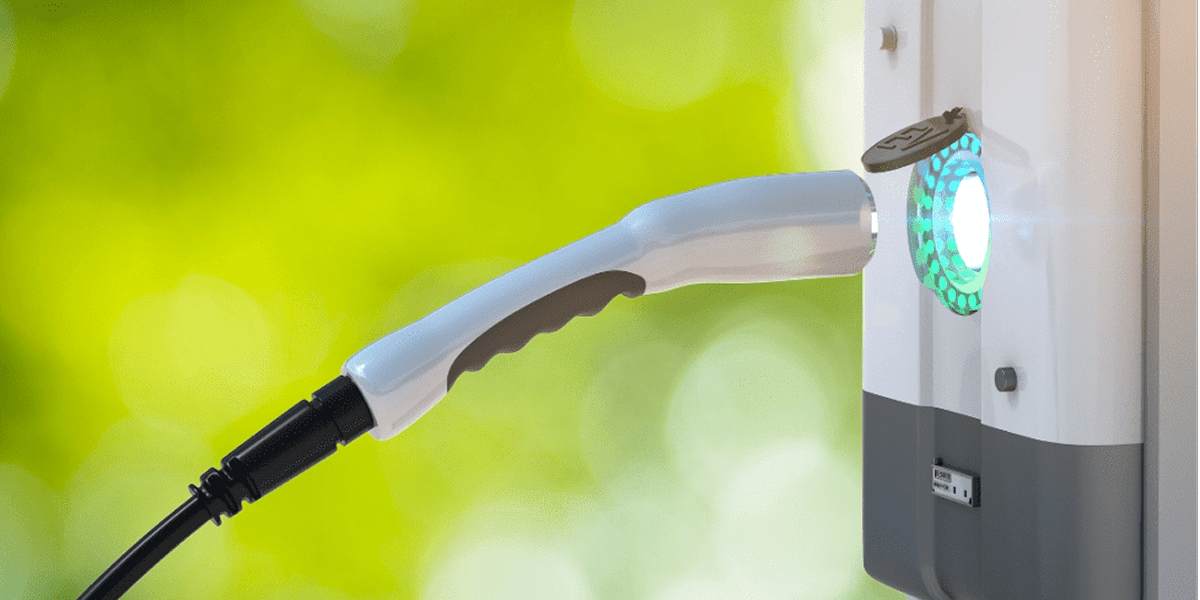- Published On:
Understanding Cost to Install EV Charger at Home: All You Need to Know
The trend of electric vehicles is booming in the U.S. as an EV offer more sustainable and cleaner source of transportation. Also, people are now preferring to charge their EVs at home, hence increasing demand for home EV chargers. However, the cost to install an EV charger at home is the major concern of homeowners.

The cost of installing an EV home charger is contingent on several factors. It includes the type of charger, requirements for the charger installation, and in some cases, changes that may need to be made on the home’s electrical system. To carry out this, it is necessary to understand the cost implications of charging EVs at home.
In this article, we will break down the factors that contribute to the overall cost of a charging station, the best home EV charger, and the installation process.
What are the types of home EV chargers?
Depending on the type of charger, EV charging times differ. Let us analyze the 3 main types of chargers available for electric cars.
- Level 1 (Slow Charging)
- Level 2 (Fast Charging)
- Level 3 (Rapid Charging)
Level 1 and Level 2 EV chargers are AC chargers while Level 3 charger is a DC charger.
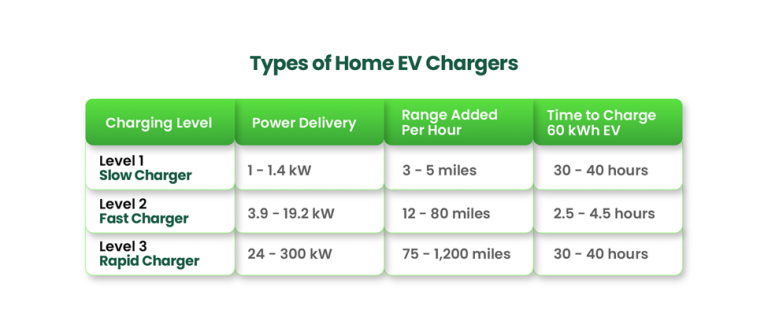
Slow Charger (Level 1 EV Chargers)
Level 1 chargers are basically used to charge cars at homes. With level 1 charging, the normal charging of an EV battery is upto 80% and will take 40–50 hours. These chargers which require a normal 120-volt house outlet to work are generally included with the purchase of an EV.
Fast Charger (Level 2 EV Chargers)
Level 2 charging systems require 240-volt circuits whereas level 1 is drawn from the standard 120-volt, 240-volt circuit. A plug-in hybrid may take 1 to 2 hours to be recharged. Furthermore, a battery electric car recharges up to 80 percent within 4 to 10 hours. A majority of fast chargers are installed in places that are open to the public such as parks, supermarkets, retail stores, and recreation amenities amongst others.
Rapid Charger (Level 3 EV Chargers)
Level 3, which uses the direct current quick charging capability, is usually installed in commercial use points and may be located at some places like the Supercharger stations of the Tesla. The DC charger for electric vehicles can charge the vehicle in a very short time. The charger at the charging station – the DC charger – converts the ACcoming from the grid to direct current. This normally takes one hour flat whilst 80% recharge time takes only 20 minutes.
Why install EV charging in your home?
The following are the advantages of having an EV charger at home which depicts why electric vehicle owners should consider having it.
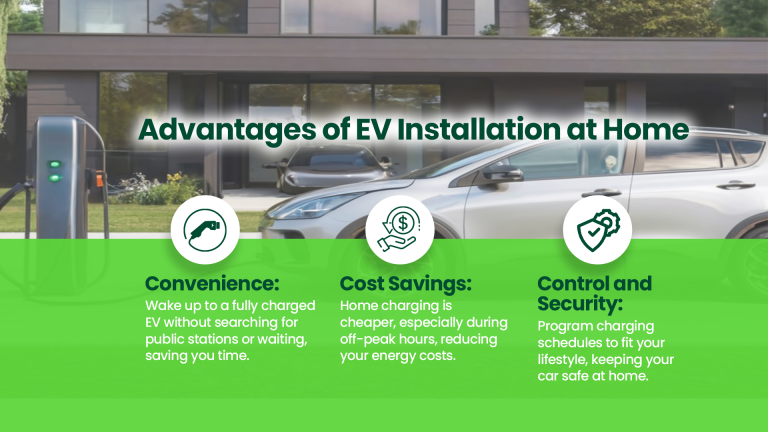
Convenience:
You can charge your EV by plugging in the car at home and you wake up to a fully charged battery. This means that there is no need to look for stations to charge your car and then wait for the car to be charged, in other words, time saver.
Cost Savings:
Home charging is typically cheaper than using public charging stations. By taking advantage of lower electricity rates during off-peak hours, you can reduce your energy costs.
Control and Security:
To make sure that your car is always available when you need it, you can program charging schedules that work with your lifestyle. When you charge your car at home, it’s in a safe place and less likely to be stolen or damaged.
What are the major factors affecting the cost to install an EV charger at home?
The cost of installing an electric vehicle (EV) charger at home can vary depending on several factors. Understanding all of these factors may help homeowners effectively manage their financial plans.
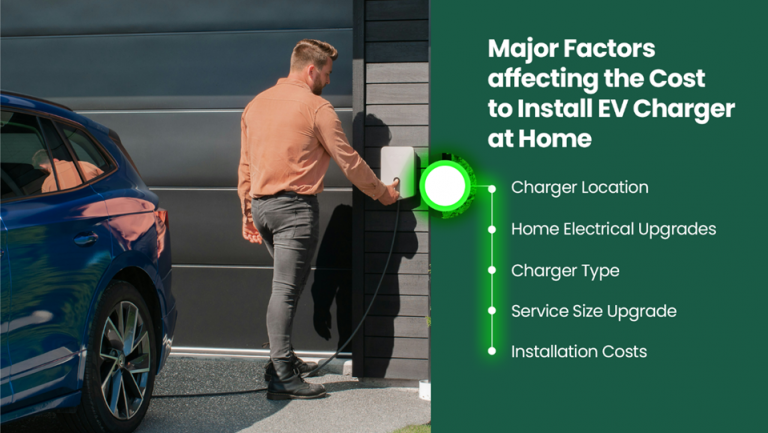
Charger Location
The installation of a charger depends on the connection point that is placed on the electrical panel of the house. Material and labor costs will increase if conduits and electrical wires are long. Level 2 chargers require 6 or 8-gauge copper wire to be used and the consumers pay by meter for the wire. You have a great chance to save money on installation by cutting the length of wiring needed for the charger. Other ways to reduce installation expenses include, fixing your charger on the nearest garage wall to the electrical panel.
It is also important to pay attention to any barriers that may be between the charger and the panel. Anything that becomes a part of the building including the main walls, detached garages, and finished basements can simply make the installation even more complicated and costly.
Home Electrical Upgrades
It is also necessary for homeowners to improve their electrical systems before installing a home electric vehicle charger. 96% homes have an electrical service size of 100A. Domestic use of ovens, heaters, air conditioners, and lights would be sufficient enough to meet this service but with the advent of EV charging it may be under pressure. However, there is a key requirement before the home chargers are established, which entail calculation of electrical load.
Charger Type
The most significant factor is the type of charger being installed. First, Level 1 chargers are the most affordable, and they simply require a conventional 120-volt outlet; generally, they come with the car. But they are slow and sometimes cannot serve all the needs of all electric vehicle owners. They are of two types – Level 1 that requires a 120 V socket and Level 2 that requires 240 V socket – more effective and faster but costly. The price of the charger depends on the brand or some of the features of the charger.
Service Size Upgrade
Modernizing your home for EV charging can benefit from upgrading your home service size. However, it comes at a significant upfront cost. Though more costly, this option usually gives the homeowner the greatest flexibility when it comes to adding extra electrical loads. The total cost to upgrade a service size will vary based on how much work is needed. Sometimes it only needs to be changed out the electrical panel; otherwise, a larger diameter wire needs to be installed inside the house and a trench needs to be dug. Other causes, such as the construction of a basement suite or the installation of solar panels connected to the grid, may require a service upgrade.
Installation Costs
For safety reasons and to ensure compliance with local electrical codes, professional installation is advised. Depending on the location, the electrician’s charges, and the complexity of the installation, labor costs can differ. If there are substantial changes to the wiring or infrastructure of the house, there can be additional expenses involved.
Charging an electric vehicle can also increase the electricity bill but having an EV charger with a solar panel system reduces the electricity cost. These are renewable sources of energy hence providing electricity to charge your EV is possible without necessarily depending on the grid. It also minimizes the extra expenses on electricity which in one way or another affects the environment positively.
If you are searching for the best home EV chargers near me, SolarSME is your trusted partner for EV charging solutions. We help you to choose a suitable charger according to your EV needs.
Related Articles:
With the increasing trend of using EVs, GM Energy V2H (Vehicle-to-Home) charging system is also gaining popularity.
What if your car could power your home during blackouts? Or, supply excess energy to the grid during peak hours?
With the advancement in technology, the world is moving toward a faster, better, and cleaner mode of transportation.

